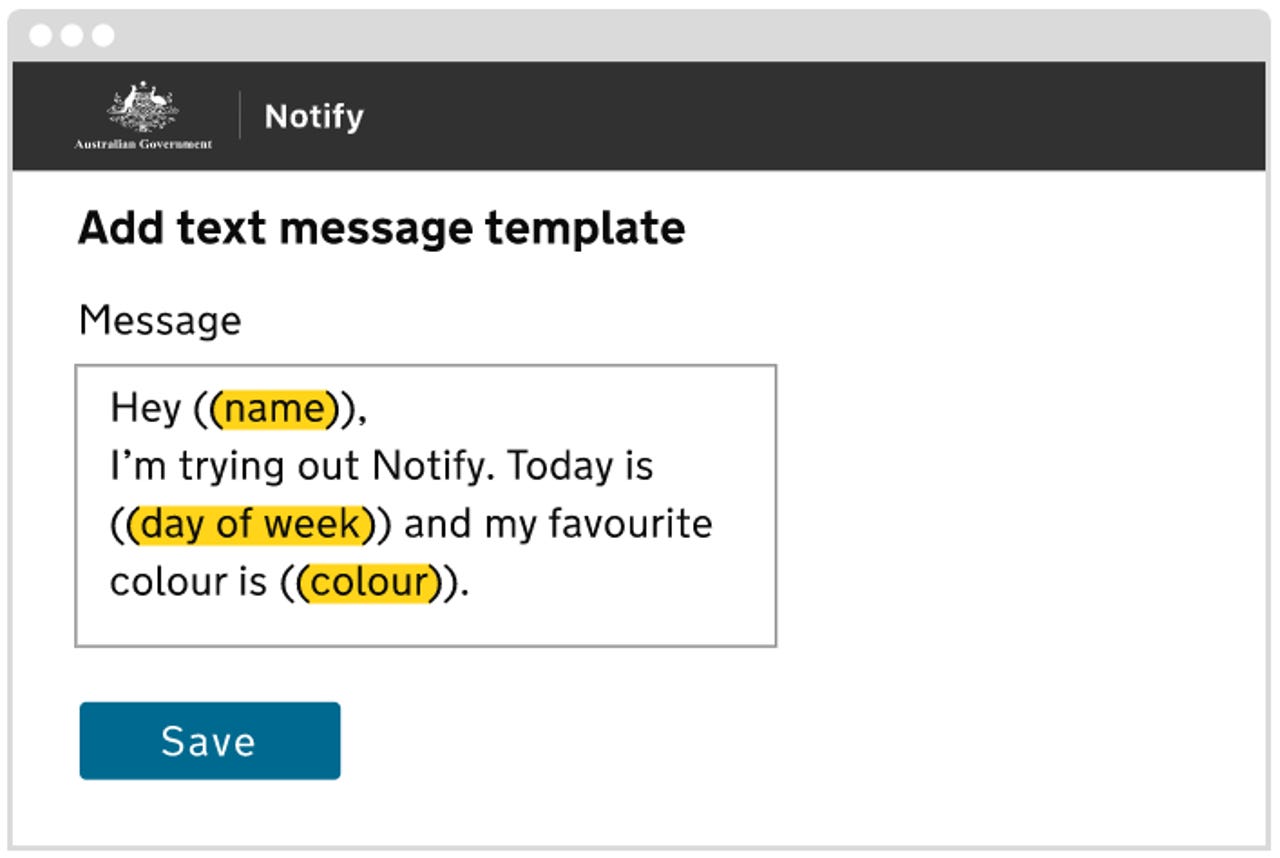Open source notify.gov.au delivered in eight weeks for a cost of AU$150k


The Digital Transformation Agency (DTA) wanted a way for government agencies to communicate easily with their customers, so it developed a vision for notifications from the perspective individuals interacting with government, and the government itself.
According to DTA CEO Randall Brugeaud, the agency looked at several options to deliver what is now notify.gov.au.
It settled on making use of an open source product that was already in place within the UK government.
"It was running on the same technology infrastructure as we used for cloud.gov.au and it aligned with our Digital Service Standard, which has 13 criteria to describe how you deliver government services," Brugeaud told the Gartner IT Symposium/Xpo on the Gold Coast.
"Self service allows the teams across government to create accounts, create and send email to users in minutes, there's templates, communications can be tailured, service teams can integrate with the platform into their backend system."
The Notify beta was delivered on March 28. In total, Brugeaud said, four people, eight weeks, and AU$150,000 were required to deliver a public beta platform.
There are currently 65 federal government organisations using the messaging service; 26 state and territory government services on it; eight local government organisations; and two "other" government bodies.
The DTA doesn't charge a procurement fee, and while in beta, users had a fee allowance of 25,000 text messages per financial year. All text messages above this allowance would be at the cost of the customer -- AU$0.06 per domestic text up to 160 characters and AU$0.13 per international.
Notify uses authorised telco providers from the Cloud Services Panel.
Still breaking down those silos
Brugeaud said his agency is also attempting to break down silos for how services are currently delivered across government.
"People's needs rarely align well with how government is structured," he said.
"People expect government to coordinate across different agencies. I think people have the perception that there's much more collaboration and sharing than might actually be occurring."
See also: Government IT projects failing as DTA's phone calls go unanswered
The DTA is working on the experience an individual has when they have a child.
"When somebody for example has a baby, they don't naturally think of the individual agencies when they're going through the post birth process to register the birth, register for childcare, manage immunisation, to register for Medicare, to create a My Health Record -- all those things are done by different organisations in government," he said.
"In fact, some in different jurisdictions -- Births, Deaths and Marriages is done by states and territories and that's where a birth certificate is generated but registering for Medicare is a Commonwealth service ... thinking about how we join those up in a more logical way from a customer perspective."
Similarly, the DTA is also focusing on its "Tell us once" concept, with Brugeaud highlighting the process an individual often has to endure following the death of a loved one.
"When we look at some life events -- 12 life events, end-to-end -- death of a loved one, end of life, is one of these life events where there are significant numbers of interactions where people need to tell different organisations the same things many times -- 34 interactions is what we found for end of life where a death certificate is required," he said.
"A notification in this platform will allow that to initially tell government fewer times, but ultimately tell government once."
Asha Barbaschow travelled to Gartner IT Symposium/Xpo as a guest of Gartner.
MORE FROM THE AUSTRALIAN GOVERNMENT
- More privacy conscious and not Australia Card 2.0: DTA defends digital identity play
- Process for fixing Centrelink data-matching discrepancy revealed
- Cyber Security Strategy 2020: Civil society experts slam 'national security' agenda
- Home Affairs pushes its face-matching service for porn age verification
- Committee orders complete redrafting of Biometric Bills as privacy safeguards are deemed inadequate